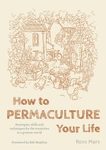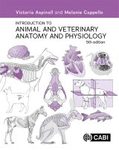![The Economics of Animal Health & Production The Economics of Animal Health & Production]()
Click to have a closer look
About this book
Contents
Customer reviews
Related titles
About this book
Illustrated with review studies on animal health economics, this book presents information on the most important economic tools applied to livestock, covering both theory and practical applications. Topics covered include gross margin analysis, partial budgeting, investment and financial appraisal and cost-benefit analysis. There are also sections on decision tree analysis, optimisation methods, value chain analysis, new institutional economics, DALYs and a range of policy analysis tools. International experts contribute on important theoretical and practical aspects of animal health and production economics, with global themes on livestock and poverty.
Contents
1. What Is Economics And How Is It Useful?
2. Livestock Production Economics
3. Economics Of Controlling Livestock Diseases: Basic Theory
4. Data Collection
5. Different Methods Of Livestock Data Collection Methods
6. Economic Analysis Tools
7. Modelling And The Generation Of Information
8. Optimisation Methods For Assisting Policy Decisions On Endemic Diseases
9. Tools That Going Beyond The Enterprise Farm Or Business Level
10. Tools For Assessing The Price And Market Impacts Of Livestock Policies
11. The New Institutional Economics And THE Assessment OF Animal Disease Control
12. Social And Culture Factors
13. The Economics Of Zoonoses And Their Control
14. Livestock Populations And Production Systems
15. The Main Livestock Diseases
16. Diseases Of Large Ruminants
17. Diseases Of Small Ruminants
18. Diseases Of Pigs
19. Diseases Of Poultry
20. Livestock Policy And Poverty Reduction - Experiences From The Developing World
21. Economics In Animal Health Policy Making In Northern Ireland
22. Animal Diseases Management In A New Livestock Trade Environment: The Case Of Chile
23. Decision Making, Scales And Quality Of Economic Evaluations For The Control Of Contagious Bovine Pleuropneumonia (CBPP)
24. Animal Health Policy In South Asia: What Can Economic Analysis Contribute
25. Approaches To Economic Analyses And Implications For Policy Issues In South East Asia Results From Three Case Studies In Crop- Animal Systems
Customer Reviews



































